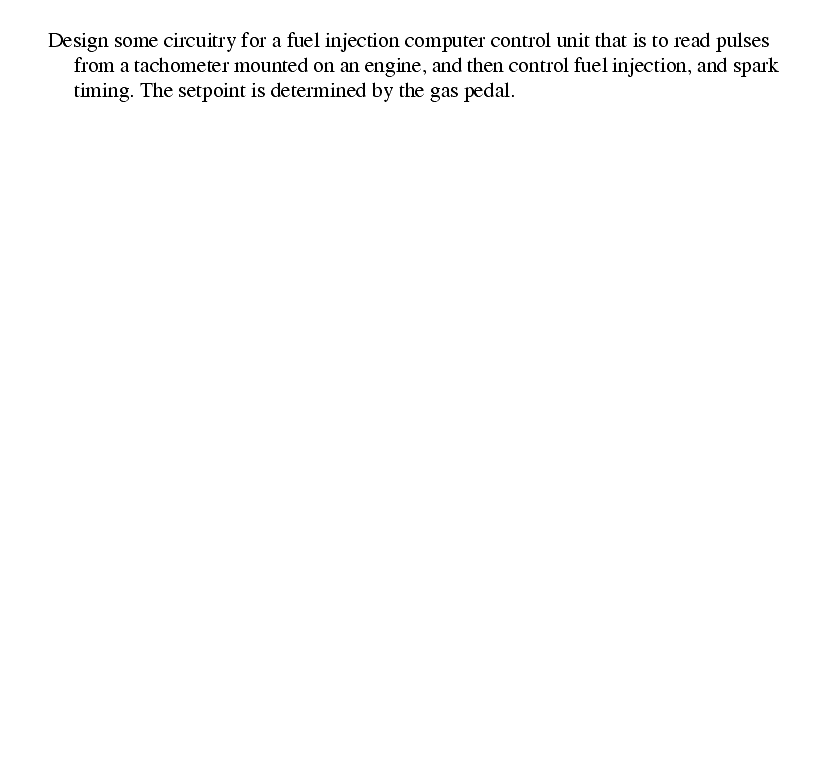4.1 DIGITAL SIGNALS
������������read by the computer, and interpreted as ON or OFF.
Within this signal type there are two categories of signal,
- Pulse data - a continuous stream of pulses. The frequency, period, or duty cycle will control the signal value. A pulse from a tachometer for every revolution will indicate the motor speed.
The electrical connections for these signals quite often require some additional circuitry. This includes,
schmitt triggers - pull a signal that may not be 0 or 5V to a reasonable logic level. It also uses a dead zone to reduce random switching. (7414?)
opto-isolators - eliminates electrical connections for circuit safety. These are basically an LED and phototransistor in one package.
RC network - a resistor capacitor pair can be used to pass only high/low frequency signals, and filter out noise/DC.
